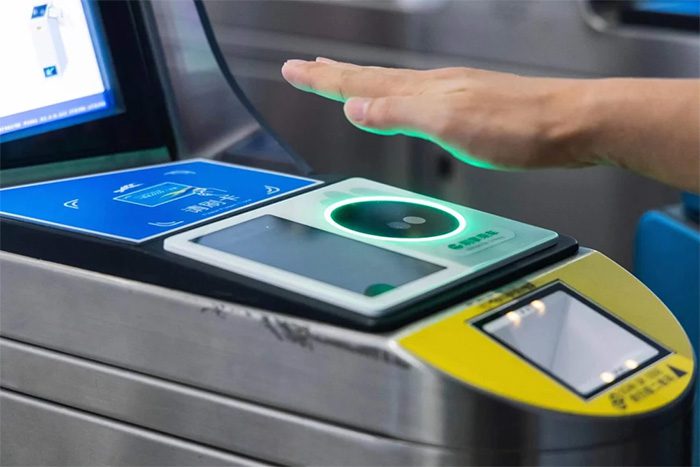Tencent has recently launched a “palm payment” method in Beijing, allowing subway passengers to pay quickly.

The “palm payment” service was implemented by Tencent at several turnstiles in Beijing subway stations. (Photo: Handout)
The new service is provided through WeChat Pay for subway passengers. Starting from May 21, users who have registered for the palm payment service can pay for the Daxing Airport line by waving their hand over a scanner located at the subway turnstiles. Once the palm print is recognized, the money is automatically deducted from the user’s WeChat account.
To register, users must visit a designated machine at the station. The turnstiles that support “palm payment” are marked with a blue circle. Tencent stated that the technology is based on recognizing both the palm print on the surface and the veins in the hand, developed by the company’s YouTu Lab.
Tencent aims to provide efficiency and convenience for users. It is suitable for the elderly and easily accessible for people with disabilities. The company plans to gradually roll out this technology to other facilities such as offices, retail stores, and restaurants.
The new payment method has sparked lively discussions on Chinese social media. Many netizens are becoming increasingly cautious about privacy due to concerns about biometric data theft. Additionally, facial recognition payments have been available for a few years. However, some people find this method more convenient than current options, especially when their phones run out of battery.
This service is currently only available to users in China who have verified their identity. Besides Tencent, several other “giants” such as Alibaba are also researching similar payment technologies for Alipay. WeChat Pay and Alipay together hold over 90% of the mobile payment market share in the mainland.
In the United States, Amazon launched the Amazone One hand-scanning technology in traditional stores in 2020, later expanding it to various locations within the Whole Foods supermarket chain.


















































